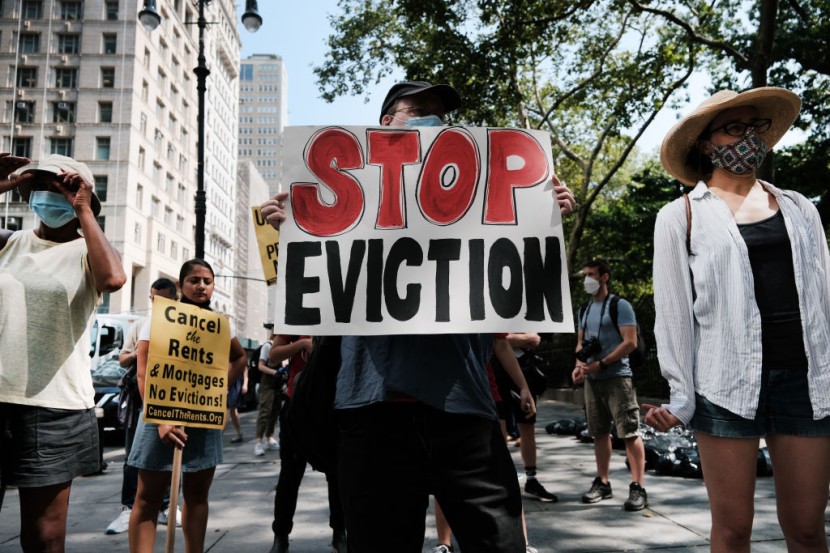
A surge in evictions post-pandemic underscores the severity of the unequal housing crisis in the United States, with numbers coming back to pre-health crisis levels.
The situation also highlights how renters of color and renters who have children are facing a significantly more difficult life facing the brunt of the country's housing crisis. Because renter protection measures that were passed during the coronavirus pandemic are being lifted, eviction rates have steadily been rising.
Post-Pandemic Eviction Rate Surge
The fate of renters affected by the housing crisis is also at risk as federal assistance has already ended. It has not been left in the hands of state and local governments as to what they would do regarding the situation.
In a report, the largest nation's eviction database, the Eviction Lab at Princeton University, found that there was a 78% increase in evictions from 2020 to 2021 in the 10 states and 34 cities that they were monitoring. Furthermore, the crisis was estimated to have gotten worse since then as remaining eviction moratoriums have expired, as per The Hill.
The more worrying part of the situation is that the trends seen in the data are showing that not all people are affected equally. Non-white tenants and tenants who have families are feeling the worst of the U.S. housing crisis.
In a statement, the associate director at the Eviction Lab, Peter Hepburn, said that families with children were disproportionately affected by evictions. In an attempt to address housing disparities, Sen. Ron Wyden and Rep. Suzanne Bonamici in May announced the Build Housing with Care Act of 2023, which would promote affordable housing that is co-located with childcare.
Wyden said that there were more than 110,000 renters in Oregon who were making less than $27,000 per year and paid more than half of their income to just rent. He added that making rent was more challenging if the cost of childcare can go up to the cost of a mortgage.
A research specialist at the Eviction Lab, Danny Grubbs-Donovan, said that the biggest increases in evictions seen from 2021 to 2022 were in Las Vegas, Minneapolis, and Houston. He added that the numbers were compared to pre-pandemic averages, according to NPR.
End of Federal Assistance
Grubbs-Donovan argued that the federal moratorium was preventing an estimated 1.5 million eviction filings in 2021. He went on to say that half of those missing filings came back the next year. He added that there were other factors in each city that factored into the filing levels, such as affordable housing supply, rent prices, and the local policy environment with regard to renters.
While the Eviction Lab research specialist said that he was not comfortable projecting eviction rates, he said that there were some things that could be done to keep people in their homes. A lot of cities in the United States have not seen a large increase or have kept their eviction filing levels well below pre-pandemic averages.
The situation was not particularly a problem just in the United States as even people from European nations are struggling with evictions in the post-pandemic era. Sam Low, a resident from Oldbury in the West Midlands, said that a month after her mother died last year, her landlord began eviction proceedings.
People crowded Downing Street calling for more security for tenants in the region and a government spokesperson said that they were committed to a fairer deal for renters. Lowe said while at court that she saw many families going through the same hardship, said BBC.
Related Article: Internal Revenue Service Issues Warning of New Tax Refund Scam
© 2025 HNGN, All rights reserved. Do not reproduce without permission.








